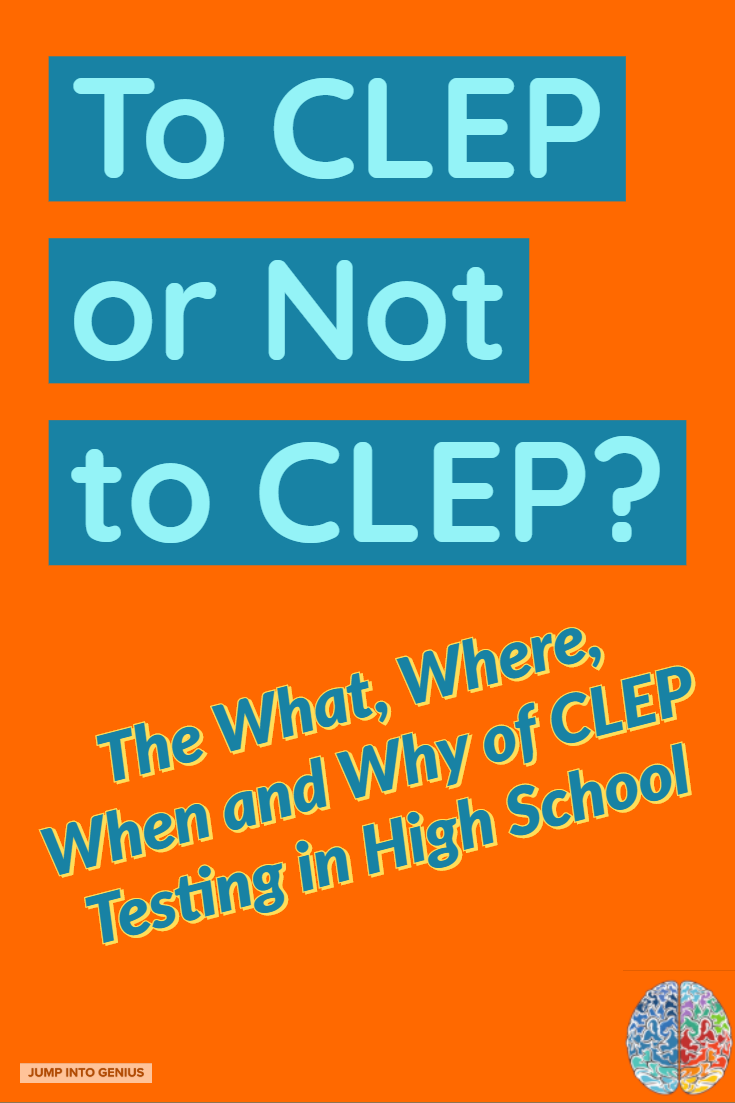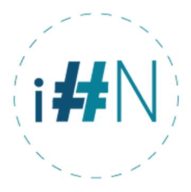
The What, When, Why and How of CLEP Testing During High School
What is CLEP?
A CLEP is a college-level test you can take to prove you know the subject. Many universities take CLEP credit and it is easy to find a list of the CLEP exams accepted at colleges you are thinking of attending later.
I find a basic core ‘set’ of the CLEP tests are accepted by most colleges.
If you pass the exam and the college you attend later accepts the test, you can skip the class and will be awarded the credits for the class. Most CLEP tests translate to 3 college credits. Ultimately the college you attend will decide, but you can easily look up the information ahead of time.
The CLEP test is designed and sold by the College Board and they will keep your scores on file.
Advantages of taking CLEP tests in high school
- For about $120 you can earn 3 college credits.
- Taking a CLEP proves you are motivated to learn because no one is holding your hand while you study for the test.
- Proves you are ready for college-level coursework.
- It can shorten the time you need to spend at University, saving you substantial money.
- Earning your first college credits early can increase confidence.
- A bad CLEP score does nothing negative to your college applications. It only goes to schools you choose to send it to.
- If you fail you can simply retake the test.
Disadvantages of taking CLEP Tests in high school
- It is possible the college you choose to attend later will not accept the CLEP test you took.
- Study materials are not consistent, it can take a bit of time to figure out which study materials are best.
- The test costs $89 and you will have to travel to a testing center, which will likely charge you a fee. (We used a local college and the fee was $30.)
- You may also need to pay for study materials.
CLEP vs. AP, what is different and which one is better?
CLEP tests and AP tests are similar in that they are both tests that many colleges will reward credit for a score above a certain amount. The main difference is that AP tests are usually taken at the end of a high school class in the subject. Instead of taking high school level U.S. History you would take college-level U.S. History at your high school and then take the test at the end of the year.
- The main advantage of taking an AP course is that you have someone to teach you the materials and prepare you for the test.
- The CLEP test does not have classes associated with it. You are an independent learner and are on your own as far as learning the material.
- CLEP tests can be taken at any time of the year, while AP classes are only offered in the spring.
- CLEP tests can be taken by anyone, you don’t have to be in high school.
You can potentially take many more CLEP tests in a year than AP classes because you are on your own timetable. You can take the tests as soon as you learn the material. Of course, it depends how much time you dedicate to study but you can learn and earn college credit at your own pace.
CLEP tests, for example, could be taken by a high schooler in the summer in order to earn extra college credit.
Why it is not crazy to push your child to earn college credits in high school
You may be wondering why parents would want to push their kids to earn college credit in high school. There are two main reasons it is a good idea.
- Colleges take AP and CLEP as proof that the teen is ready and able to complete college-level work. They want to see at least a few of these on the high school transcript.
- Money, with the rising cost of college shortening the time spent in college, can save you or your child thousands of dollars.
Saving money and having a solid transcript for college applications are not crazy. So, let’s drop the stereotype that only pushy parents or over-achieving kids should be taking advantage of these options. This is just common sense and ‘average’ kids are quite capable of passing these tests.
If your child cannot pass one of these tests college may not be the best option for them. It might be better to figure that out before moving them across the country to some dream campus and throwing tuition money out the window.
Financial stats
Let’s look at some of the numbers to put the savings available by taken advantage of CLEP tests into perspective.
- The average cost of 1 college credit is $594 dollars.
- The average cost of 1 college credit at a private college or university is even higher, $1039.
- The average cost of 1 college credit at a public university or college is lower, $325.
- At a two-year college, the price for 1 credit drops to an average of $135.
How does this compare to the cost for 1 credit of CLEP? The CLEP test is $89. Let’s add the average testing center fee of $30. We paid $119. Most tests are worth 3 credits, so the price for 1 credit = $40
(Some CLEP tests, such as the foreign language test can earn 6 credits depending on the score. This allows students to sometimes test out of 6 credits for the same price, = $20 for 1 credit.)
I think these numbers speak for themselves. Of course, if you take a CLEP like College Mathematics you may find the college you go to later does not accept the test and then you are out 120 bucks.
However, you still gained the knowledge that you are ready to complete college-level math and are much less likely to perform so low on entrance tests that you get assigned remedial coursework for which you will earn no credits at all. So there can still be advantages. If you want a math course that will have a higher likelihood of transferring can take College Algebra.
(Honestly, I can’t blame colleges if they don’t accept the College Mathematics CLEP, my 16-year-old took it and he hasn’t even finished high school math, he studied maybe 4 hours total and passed with a great score…so I’m not sure how you can do that without having finished geometry or trig yet. He had completed Algebra I and Algebra II.)
Process
The first part of getting ready to take a CLEP should be deciding which test you want to take. You might choose a test based off of difficulty level, or a subject your child is strong in. You could even choose a test that covers a topic not covered by high school options, but that you think your child may be interested in as a career.
After you choose your test you will want to decide which resources you want to use to study. You can see our experience and recommendations for resources below.
Decide when you are going to study and put it on your schedule.
The student taking the exam will need to create an account on the College Board website. (This name on the account must match the name on their picture I.D. to take the test, you can not make this a parent account.)
Once you have studied and passed a practice test you can go to the College Board website to purchase the CLEP test. (You must take the CLEP within a certain amount of time from purchase, I think 90 days, so don’t purchase until you are ready.)
Next, you will find a testing center and schedule a time to take the test.
You will receive your score as soon as the test is complete…no waiting!
We chose to take the U.S. History I test because it is one of the easier tests and all the colleges I have looked at so far accept this test. It will also fulfill general ed requirements for most degrees.
U.S. History 1 study notes
So, how do you get ready for the test? I went through the process of studying for this test alongside my teens so I could evaluate different study materials and figure out which ones would be the best to rely on in the future. Below are the programs and books we used, separated into worked/didn’t work categories.
What worked
I will start where we ended up, which was study.com. I held out on this option because it seemed expensive to me, a subscription costs $60 a month. I found out after we used it that I can easily pause the subscription for up to 90 days at a time, so we just pause it when we aren’t studying for a CLEP and then when it turns back on we go ahead and pick another CLEP to study for. This may not work for everyone, but of course, you can also cancel your membership.
If you use this option you have to add that cost to what you are paying for the college credit, but you still come out ahead of other options for earning credit.
The reason I like it is that there is a full course, but there are also sample tests. The sample test will pull up the topics the student needs to work on. Since my teens already knew a lot of U.S. History these tests saved us a lot of time, allowing them to focus on the areas of content that they did not know, instead of having to slog through content they were already very familiar with.
I found the practice test to be quite accurate. Once they were passing the practice test, they went and took the real CLEP and passed with 10 points to spare. (Student ages at the time of test were 14 and 16.) CLEP scoring is very confusing but the highest possible score is 80, and a score of 50 passes.
What did not work
The first thing I tried was the Khan Academy course for AP US History. Since AP and CLEP basically should be covering the same content, since they both count for a US History college course, I figured this would prepare them. However, after going through the course, they took a practice test in the Official CLEP Study Guide and did not get a passing score.
I could clearly see that the content on Khan Academy was not at a college level. It may be great for math, but we will not be using it for CLEP preparation.
I already mentioned the Official CLEP Study Guide, which would be more accurately named “Official Practice Tests”. There is no ‘study guide’ component to this book. Sure, it has a list of several textbooks you could purchase to study from, and recommends you use several since textbook content varies and they cannot guarantee that any textbook covers all the content the test covers. This is inefficient, to say the least.
There is a short description of what each tests covers but this is not thorough enough to be used as a stud guide. I am not sure this book will add much to your experience unless you need the study test.
An entirely free option
Another option we tried was Modern States. We did not find their content helpful or easy to digest for the U.S. History I exam. However, there are several reasons you still might want to consider using them and we will probably check out some of their other courses.
Modern States will provide you with a voucher to cover the cost of the exam and the testing center fee. You do have to use their course. But if your budget is tight it might be worth going with their program. Their work with several different course providers for their program so I suspect that we make like courses that are created by other providers more than the one that made the U.S. History course.
The reason we did not like it was that there were basically just very long stretches of a dry textbook assigned to read online. Then you could take quizzes to check retention. I thought there were videos, but they were very short and did not cover the content needed. My teens hate reading online and I found the text to be so dry it put me to sleep, and I can read almost anything. My object is not to torture my teens, but to help them learn and prove their learning.
However, Modern States is still a young and developing program and I expect their content to improve over time. It is a great resource to check out.
Basic info and links
For more basic info about the CLEP exams go to the CLEP info page of the College Board website.
If you want to jump into the easiest, most efficient resource to use, try study.com.
For free CLEP exams go to Modern States.
*I am not affiliated or associated with CLEP or any of the above companies in any way. *



2 Responses
[…] ways of getting a college education. Depending on the degree they are pursuing, they may be able to take CLEP tests to cover many credits and lower the overall cost. This can be a great option for a kid who wants an […]
[…] first experience with Study.com was actually using them with my teens to study for an American History CLEP test. This test is accepted at most colleges and gives them 3 college credits. With the help of Study.com […]